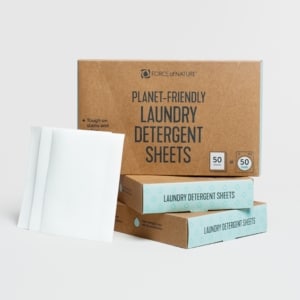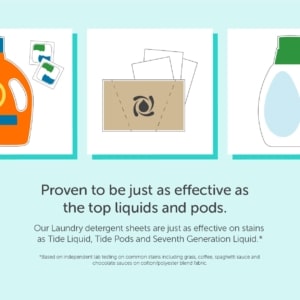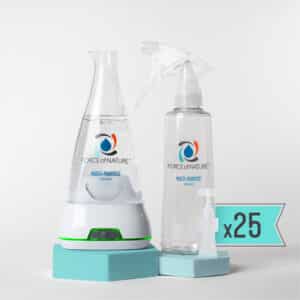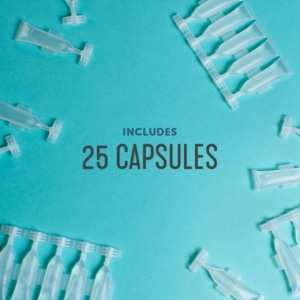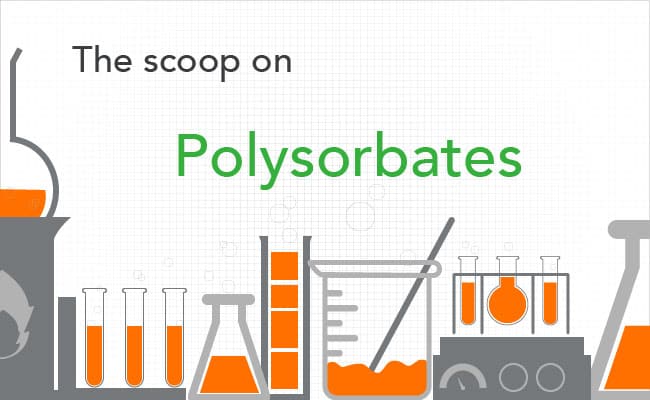
What are polysorbates?
Polysorbates are used in cleaners and personal care products as fragrance ingredients, emulsifying agents, and as surfactants [1]. Polysorbate is treated with ethylene oxide (when it’s “ethoxylated”), then the substance is combined with fatty acids. The number following it represents the number of parts of ethylene oxide it was treated with.
What are polysorbates in?
Polysorbates are used in personal care products, cleaning products, tampons, as well as vaccines and other medications [1][2][4].
How to tell if a product has polysorbates
There’s more than one kind of polysorbate used today. It could be listed as polysorbate followed by a number or under these synonyms: Liposorb; PEG sorbitan laurate; Tween 20; PEG-# sorbitan laurate; Polyethylene glycol (#) sorbitan laurate (where # = 4,10,40,44,75,80,500,2000, or 4000), PEG-80 sorbitan laurate, monododecanoate poly (oxy-1,2-ethanydiyl) derivs, sorbitan, polyoxyethylene sorbitan monolaurate; polyoxyethylene (20) sorbitan monolaurate, polysorbate-20, sorbimacrogol laurate 300, sorbitan, monododecanoate, poly (oxy-1,2 ethanediyl) derivs. [1, 8].
Risks associated with polysorbates
Health concerns related to the presence of polysorbates and impurities related to this ingredient include cancer (due to ethylene oxide and 1,4 dioxane), skin allergies, developmental toxicity, reproductive toxicity. [1, 3, 5, 6, 7]. One of the biggest concerns regarding polysorbates is the presence of carcinogens including ethylene oxide and 1,4 dioxane. When polysorbate is “ethoxylated”, it can become contaminated with these dangerous carcinogens.
How to avoid polysorbates
Read the labels on personal care products, tampons, and cleaners to avoid polysorbates whenever possible. Be sure to look for synonyms (listed above) used to designate the presence of polysorbates. In cleaning products, where manufacturers aren’t required to list all their ingredients on product labels, choose toxic chemical free alternatives that don’t contain toxic surfactants and fragrances. Also remember that because there are no federal criteria dictating standards for what makes a cleaning product “natural”, so-called natural cleaners may contain this toxic chemical. It’s safer to go with options using only simple, non toxic ingredients.
In personal care products, do your own research on a product’s ingredients by using a resource such as the Environmental Working Group’s Skin Deep product database. Choose unscented tampons [4].
References:
[1] EWG’s Skin Deep Cosmetics Database (2007-2016). Polysorbate-20. Available online: https://www.ewg.org/skindeep/ingredient/705137/POLYSORBATE-20/ December 20, 2016.
[2] CDC (1984). Unusual Syndrome with Fatalities among Premature Infants: Association with a New Intravenous Vitamin E Product. Available online: https://www.cdc.gov/mmwr/preview/mmwrhtml/00000319.htm December 20, 2016.
[3] EWG’s Guide to Healthy Cleaning (2007-2016). Polysorbate-20. Available online: http://www.ewg.org/guides/substances/152199-POLYSORBATE20 December 20, 2016.
[4] Women’s Voices for the Earth (2016). Secret Toxic Chemicals in Tampons. Available online: http://www.womensvoices.org/2014/06/30/toxic-tampons/ December 20, 2016.
[5] EWG’s Guide to Healthy Cleaning (2007-2016). Polysorbate-40. Available online: http://www.ewg.org/guides/substances/4716-POLYSORBATE40 January 23, 2107.
[6] EWG’s Guide to Healthy Cleaning (2007-2016). Polysorbate-60. Available online: http://www.ewg.org/guides/substances/4717-POLYSORBATE60 January 23, 2107.
[7] EWG’s Guide to Healthy Cleaning (2007-2016). Polysorbate-80. Available online: http://www.ewg.org/guides/substances/4720-POLYSORBATE80 January 23, 2107.
[8] US Department of Health & Human Services Household Products Databases. Available online: https://householdproducts.nlm.nih.gov/cgi-bin/household/brands?tbl=chem&id=65&query=polysorbate&searchas=TblChemicals January 23, 2107.
